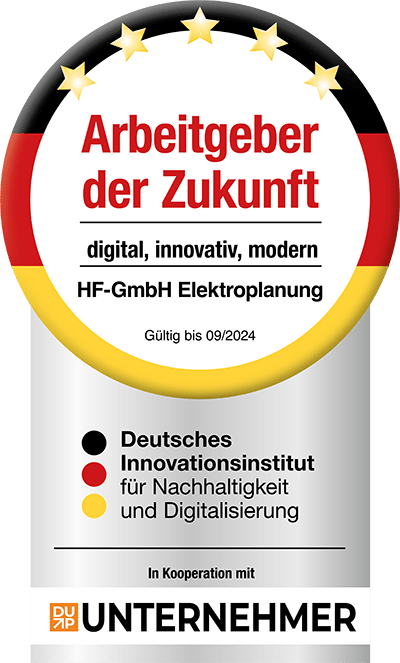Beleuchtungstechnik
Beleuchtungstechnik bezieht sich auf die Anwendung von Licht zur Erzielung eines praktischen oder ästhetischen Effekts. Sie umfasst sowohl die Verwendung von natürlichem Licht, als auch künstliches Licht.
mehr dazu
Blitz- / Überspannungsschutz
Blitz- und Überspannungsschutz sind wesentliche Aspekte im Bauwesen, um Gebäude und elektrische Anlagen vor den potenziell verheerenden Auswirkungen von Blitzeinschlägen und elektrischen Überspannungen zu schützen.
mehr dazu
Bus-Technologie
BUS-Technologie ist ein Kommunikationssystem, das in der Gebäudeautomation und -steuerung eingesetzt wird. Es ermöglicht die Kommunikation zwischen verschiedenen elektronischen Geräten über eine gemeinsame Datenleitung (den "Bus").
mehr dazu
IT-Technik
Die IT-Technik, auch bekannt als Informationstechnologie, bezieht sich auf die Verwendung von Computern, Netzwerken, Software und anderen digitalen Technologien zur Speicherung, Verarbeitung, Übertragung und Abrufung von Informationen.
mehr dazu
Lichtrufanlagen
Lichtrufanlagen, oft auch als Schwesternrufsysteme bezeichnet, sind Kommunikationssysteme, die in Gesundheitseinrichtungen eingesetzt werden. Sie ermöglichen es den Patienten oder Bewohnern, das Pflegepersonal schnell und einfach zu rufen.
mehr dazu
Medientechnik
Die Medientechnik bezieht sich auf die Technologien und Geräte, die zur Erzeugung, Verarbeitung und Übertragung von Medieninhalten wie Text, Audio, Video, Bilder und interaktive Medien verwendet werden.
mehr dazu
Mittel- und Niederspannungsanlagen
Mittel- und Niederspannungsanlagen sind wichtige Bestandteile der elektrischen Infrastruktur in Gebäuden und anderen Einrichtungen. Sie werden zur Verteilung und Steuerung von elektrischer Energie verwendet.
mehr dazu
Sicherheitstechnik
Sicherheitstechnik bezieht sich auf die Anwendung von technischen Systemen zur Gewährleistung der Sicherheit von Personen und Eigentum. Sie kann eine Vielzahl von Systemen umfassen, wie z. B. eine Einbruchmeldeanlage.
mehr dazu
Systemintegration
In einigen modernen Gebäuden können Mediensysteme in die Gebäudeautomation und -steuerung integriert werden, um z.B. automatische Lichtszenen, Multiroom-Audio, Videoüberwachung usw. zu ermöglichen.
mehr dazu
Telekommunikationsanlagen
Telekommunikationsanlagen sind Systeme, die zur Übertragung von Sprache, Daten, Text, Bildern und Videos über weite Strecken eingesetzt werden. Sie sind ein wesentlicher Bestandteil der modernen Kommunikationsinfrastruktur.
mehr dazu
Energieversorgung
Bereitstellung von Energie in Form von Elektrizität, für den Betrieb von Gebäuden und Anlagen. Dazu gehört die Bereitstellung von Strom aus dem öffentlichen Netz oder aus alternativen Quellen wie Solarenergie, Windenergie oder Generatoren.
mehr dazu
Individuelle Lösung
Bei speziellen Anforderungen sind wir gerne für Sie da. Kontaktieren Sie einen unserer Standorte in Karlsruhe oder Köln. Wir freuen uns darauf, mehr über Ihr Projekt zu erfahren und passgenaue Lösungen für Sie zu entwickeln.
Kontakt
